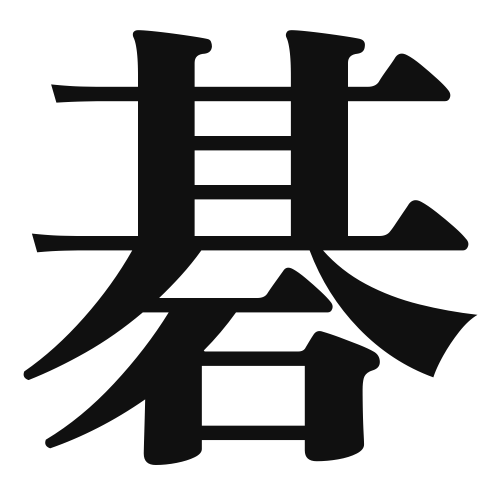1. Overview of Meaning
The kanji “碁” (go) refers to the traditional board game known as Go, which is played with black and white stones on a grid. It is a game of strategy and skill, originating from ancient China and widely popular in East Asia, particularly in Japan.
2. Formation and Radicals
The kanji “碁” is a compound character (会意文字) that combines elements to convey its meaning. It consists of the radical “石” (stone) which signifies the stones used in the game, and the phonetic component “Go” which indicates its pronunciation.
The radical “石” is commonly associated with stones or rocks, emphasizing the material used in the game.
3. Examples of Usage
Common words and phrases that include the kanji “碁” are:
- 囲碁 (いご, igo) – Go game
- 碁盤 (ごばん, goban) – Go board
Example sentence in daily conversation:
「今晩、友達と囲碁をする予定です。」
(I plan to play Go with my friend tonight.)
4. Synonyms and Antonyms
Similar kanji with related meanings include:
- 将棋 (しょうぎ, shogi) – Japanese chess, which is also a strategic board game but has different rules and gameplay.
Antonyms or contrasting terms are less common in this context, as “碁” specifically refers to the game of Go. However, one could consider “負け” (まけ, make) meaning “loss” as a contrasting term in the context of gameplay.
5. Cultural and Historical Background
The game of Go has deep roots in Japanese culture, often associated with intellectual prowess and strategic thinking. It has been played for centuries and is considered an art form as well as a competitive sport.
Proverbs and idiomatic expressions related to Go include:
- 「碁は一手に千金」 (Go wa itte ni senkin) – “In Go, one move can be worth a thousand gold.” This emphasizes the importance of each move in the game.
Overall, “碁” is not just a game but a significant part of East Asian culture, reflecting values of patience, strategy, and intellectual engagement.
